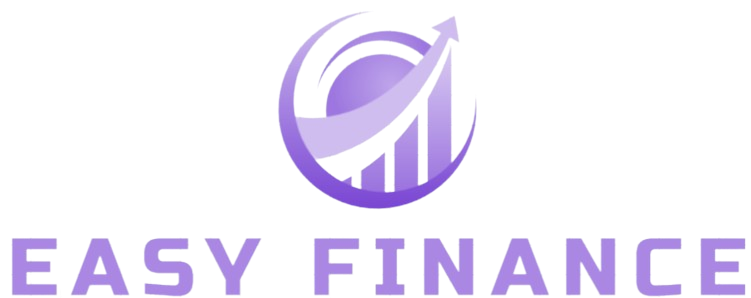Understanding how to get a loan before your paycheck can be a game-changer when you’re in a financial bind. We all know the feeling: an unexpected expense pops up, and you need cash fast. Whether it’s an urgent car repair or a medical bill, having access to funds before your next paycheck can provide much-needed relief. In this article, we’ll explore the various options available for loans before payday, how to apply for them, and tips for managing them effectively.
Types of Loans Available Before Paycheck
How Payday Loans Work
Payday loans are short-term loans designed to help individuals manage their finances until their next paycheck arrives. These loans are particularly attractive because they are relatively easy to obtain and do not require extensive paperwork or a lengthy approval process. Typically, you can borrow a small amount, usually ranging from $100 to $1,000, depending on your state’s regulations and the lender’s policies. Once approved, the loan amount is transferred to your bank account, and you are required to repay the loan in full, along with any applicable fees, by your next payday.
The process of obtaining a payday loan is straightforward. Most lenders have an online application system, which makes the process quick and convenient. You need to provide some basic personal information, proof of income, and a bank account where the loan can be deposited. Once your application is approved, the funds are usually available within 24 hours. It’s important to note that payday loans are intended for short-term financial emergencies and should not be used as a long-term financial solution due to their high costs.
Pros and Cons of Payday Loans
The primary advantage of payday loans is their accessibility. They are available to individuals with poor credit scores who may not qualify for other types of credit. The quick approval process and minimal requirements make them a viable option for those in immediate need of cash. Furthermore, payday loans can provide a temporary financial cushion, allowing you to cover unexpected expenses such as medical bills, car repairs, or utility bills.
However, payday loans come with significant drawbacks. The most notable disadvantage is the high-interest rates and fees associated with these loans. The annual percentage rate (APR) on payday loans can be extremely high, often exceeding 400%. This can lead to a cycle of debt, where borrowers are unable to repay the loan in full and are forced to take out additional loans to cover the original loan and its fees. This can quickly escalate into a significant financial burden. Therefore, it is crucial to carefully consider the pros and cons before opting for a payday loan and to ensure that you can repay the loan on time.
Eligibility Criteria
Personal loans offer a more flexible and often more affordable option compared to payday loans. They are typically unsecured loans, meaning you do not need to provide collateral to secure the loan. However, eligibility for a personal loan depends on several factors, including your credit score, income, and employment history. Lenders use these criteria to assess your ability to repay the loan. A higher credit score and stable income increase your chances of approval and may result in more favorable loan terms.
To apply for a personal loan, you will need to provide detailed information about your financial situation. This includes your credit history, current income, employment details, and any existing debts. Lenders will evaluate this information to determine your creditworthiness. If you have a good credit score and a steady income, you are more likely to qualify for a personal loan with a lower interest rate and better repayment terms. On the other hand, if your credit score is low, you may still qualify for a loan, but the interest rate will likely be higher, and the terms less favorable.
Interest Rates and Repayment Terms
Personal loans usually come with fixed interest rates and repayment terms, making them easier to manage compared to variable-rate loans. Fixed interest rates mean that the interest rate remains the same throughout the loan term, providing predictability in your monthly payments. This stability allows you to budget more effectively and avoid the risk of rising interest rates increasing your monthly payments.
The repayment terms for personal loans are typically more flexible than those of payday loans. You can borrow larger amounts of money, and the repayment period can extend over several years, depending on the lender’s policies and the loan amount. This extended repayment period can make personal loans a more manageable option for significant expenses such as home improvements, medical bills, or debt consolidation. However, it is essential to understand the total cost of the loan, including interest, fees, and the length of the repayment period, to ensure that it fits within your financial plan.
Employer-Provided Loans
How to Request a Loan from Your Employer
Some employers offer loans to their employees as part of their benefits package. These loans can be a convenient and cost-effective option, especially since they often come with favorable terms and lower interest rates compared to other types of loans. To request a loan from your employer, you typically need to discuss it with your Human Resources (HR) department. They will provide you with the necessary forms and guidelines for applying.
The process usually involves providing a valid reason for the loan, such as covering emergency expenses or unexpected bills. Once you submit your application, the HR department or the finance team will review it and determine your eligibility. If approved, the loan amount is either added to your next paycheck or provided as a separate payment. Repayment terms and conditions will be outlined, and repayments are typically deducted from your future paychecks automatically, making it a hassle-free option for employees.
| Step | Action | Details | Notes |
| Discuss with HR | Contact HR department | Inquire about availability and application process | Prepare to explain your need for the loan |
| Provide Documentation | Submit necessary forms and proof of need | Documentation may include expense details | Ensure all required documents are complete and accurate |
| Approval Process | HR or finance review application | Determining eligibility and loan amount | Approval time varies; follow up if needed |
| Loan Disbursement | Approved amount disbursed | Added to paycheck or separate payment | Verify receipt of funds |
| Repayment Terms | Repayments deducted from paychecks | Automatic deductions as per agreed terms | Understand the full repayment schedule and terms |
Benefits of Employer Loans
Employer-provided loans can be an excellent option for employees because they often come with significant benefits. One of the primary advantages is that these loans are usually interest-free or come with very low interest rates, making them much more affordable than other loan options. Additionally, since the repayment is automatically deducted from your paycheck, it simplifies the repayment process and reduces the risk of missing payments.
Another benefit of employer loans is that they do not require a credit check, making them accessible to employees with less-than-perfect credit. This can be particularly beneficial for those who may not qualify for traditional loans due to their credit history. Furthermore, employer loans are often processed quickly, providing employees with the funds they need in a timely manner. This combination of low cost, ease of access, and quick processing makes employer-provided loans a valuable resource for employees facing financial challenges.
| Benefit | Details | Impact | Notes |
| Low/No Interest Rates | Often interest-free or very low rates | Reduces overall cost of borrowing | Compare with other loan options to see savings |
| No Credit Check Required | Accessible to employees with poor credit | Easier to qualify | Beneficial for those with less-than-perfect credit |
| Automatic Repayment | Deductions from paycheck | Simplifies repayment, reduces risk of missed payments | Ensure you understand deduction schedule |
| Quick Processing | Fast approval and fund disbursement | Timely access to needed funds | Useful for urgent financial needs |
Steps to Apply for a Loan Before Paycheck
Assessing Your Financial Needs
Before applying for a loan, it’s crucial to determine exactly how much money you need. This involves carefully considering all potential expenses that the loan will cover. Start by listing out all immediate financial needs, such as:
- Bills
- Medical expenses
- Emergency repairs
Including these elements will help you avoid borrowing more than necessary, which can lead to unnecessary debt. It’s also wise to include a small buffer for any unexpected costs that might arise. By being thorough in your calculations, you ensure that the loan amount you request is adequate and not excessive.
Another important aspect is ensuring that the loan amount you seek is something you can afford to repay comfortably. Borrowing more than you need can lead to higher interest payments and a larger financial burden. Consider the loan’s impact on your future finances and make sure it fits within your overall budget. This approach not only helps in managing your current financial needs but also safeguards your financial health in the long term.
Your Repayment Capacity
Evaluating your repayment capacity is just as important as calculating the loan amount. Start by examining your monthly income and expenses. Create a detailed budget that outlines:
- All your sources of income
- Regular expenses including rent, utilities, groceries, and other recurring bills
This will give you a clear picture of how much disposable income you have available to dedicate to loan repayments.
Once you have a clear understanding of your finances, determine how much you can realistically afford to repay each month without straining your budget. It’s crucial to ensure that the loan repayments won’t affect your ability to meet other financial obligations. Overestimating your repayment capacity can lead to:
- Missed payments
- Damaged credit score
- Additional fees and penalties
By being realistic and conservative in your calculations, you can choose a loan amount and repayment plan that align with your financial situation.
Researching Lenders
Comparing Interest Rates
Different lenders offer varying interest rates, and these differences can significantly impact the total cost of your loan. Take the time to shop around and compare rates from multiple lenders to find the most affordable option. Start by gathering information from banks, credit unions, online lenders, and other financial institutions. Make use of online comparison tools and financial advisory services to get a comprehensive view of the interest rates available in the market.
When comparing interest rates, it’s important to consider both the nominal rate and the Annual Percentage Rate (APR). The APR includes both the interest rate and any additional fees or charges associated with the loan, providing a more accurate picture of the loan’s true cost. A lower APR can save you a significant amount of money over the life of the loan. Additionally, keep an eye on any promotional rates or special offers, but be sure to understand the terms and conditions associated with these offers to avoid any hidden costs.
Evaluating Terms and Conditions
Reading the fine print carefully is essential when evaluating the terms and conditions of a loan. Loan terms can vary widely between lenders, so it’s important to understand all aspects of the loan agreement before committing. Pay attention to the repayment period, as this will affect your monthly payments and the total interest paid over the life of the loan. A longer repayment period might mean lower monthly payments, but it also means paying more in interest over time.
In addition to the repayment period, consider any fees associated with the loan, such as origination fees, late payment fees, and prepayment penalties. Some loans might offer lower interest rates but have higher fees, which can offset the savings. Understanding these terms will help you avoid unexpected costs and choose a loan that best fits your financial situation. Always ask the lender to clarify any terms you do not understand and seek advice if needed to ensure you are making an informed decision.




